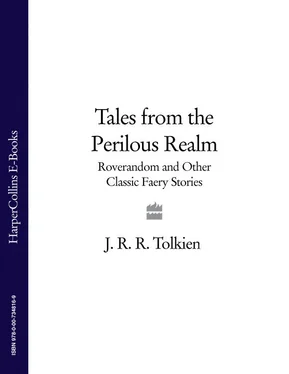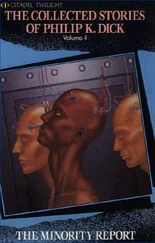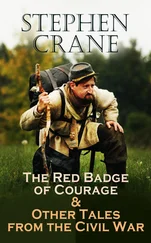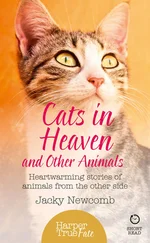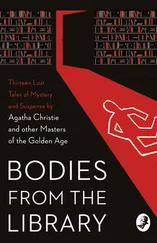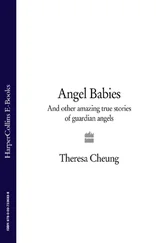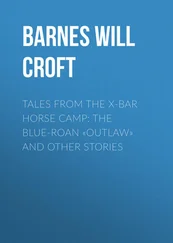However, while he had no time for fairies, Tolkien was all for Faërie itself, the land, as Bilbo Baggins puts it, of “dragons and goblins and giants”, the land where one may hear of “the rescue of princesses and the unexpected luck of widow’s sons”. The stories and poems in this book show Tolkien trying out various approaches to perilous realms of one kind or another, all of them suggestive, original, independent. They represent, one may say, the pictures Niggle did not “tack on to the edges of his great picture”. They hint tantalisingly at directions which might have been explored further, like the later unwritten history of Farmer Giles’s Little Kingdom. And they give quite different views of Tolkien’s inspiration, spread over a period of at least forty years, and extending from maturity to old age. Also, as it happens, we know a good deal about how each of them came into being.
Roverandom , not published till 1998, began more than seventy years earlier as a story with a single limited purpose: to console a little boy for the loss of his toy dog. In September 1925 the Tolkien family, father, mother, and three sons, John (aged eight), Michael (aged five), and baby Christopher, went on holiday to the seaside town of Filey in Yorkshire. Michael at that time was very attached to a small toy dog, which went everywhere with him. He and his father and elder brother went down to the beach, he put it down to play, but when they went back for it they couldn’t find it: the dog was white with black spots, and on a white shingle beach it was invisible. They looked for it without success that day and the next, and then a storm wrecked the beach and made further search impossible. To cheer Michael up, Tolkien invented a story in which toy Rover was not a toy, but a real dog turned into a toy by an angry wizard; the toy then met a friendly wizard on the beach, who sent him off on various quests in order to become a real dog again, and be reunited with his one-time owner, the boy called “Two”. Like all Tolkien’s stories, this grew in the telling, being written down, with several of Tolkien’s own illustrations, probably around Christmas 1927, and reaching final shape at about the same time as The Hobbit , in 1936.
Besides the beach at Filey, where Rover meets the sandwizard Psamathos, Roverandom has three main settings, the light side of the Moon, where the Man in the Moon has his tower, the dark side, where sleeping children come down the moon-path to play in the valley of dreams, and the undersea kingdom of the mer-king, where the angry wizard Artaxerxes has gone to take up a position as Pacific Atlantic Magician, or PAM. Both in the Moon and under the sea Rover is befriended by a moon-dog, or a mer-dog, both called Rover, which is why he has to take the name Roverandom. The three of them get into continual scrapes, teasing the Great White Dragon on the Moon, and stirring up the Sea-serpent on the ocean-bed, whose writhings send a storm like the one that scattered the shingle at Filey, while Roverandom is carried by the great whale Uin across the Shadowy Seas and beyond the Magic Isles to within sight of Elvenhome itself and the light of Faery—the nearest Tolkien comes to attaching this story to his greater mythology. “I should catch it, if this was found out!”, says Uin, diving hastily, and we hear no more of what would be Valinor.
“Catch it!” captures the tone of this early and humorous piece. The little dogs’ adventures are playful, the animals who transport them, Mew the gull and Uin the whale, are no worse than condescending, and even the three wizards who make an appearance are good-natured or, in the case of Artaxerxes, something less than competent. Nevertheless there are hints of things older and darker and deeper. The Great White Dragon the dogs tease on the Moon is also the White Dragon of England in the Merlin legend, forever at war with the Red Dragon of the Welsh; the Sea-serpent recalls the Midgard Serpent who will be the death of Thor on the day of Ragnarok; mer-dog Rover remembers a Viking master who sounds very like the famous King Olaf Tryggvason. There is myth, and legend, and even history, in Roverandom. Nor did Tolkien forget that even for children there must be suggestions of peril in the Perilous Realm. The dark side of the Moon has black spiders, as well as grey ones ready to pickle little dogs for their larders, while on the white side “there were sword-flies, and glass-beetles with jaws like steel-traps, and pale unicornets with stings like spears…And worse than the insects were the shadowbats”, not to mention, on the way back from the valley where the children go in dreams, “nasty creepy things in the bogs” that without the Man in the Moon’s protection “would otherwise have grabbed the little dog quick”. There are sea-goblins too, and a whole list of calamities caused by Artaxerxes tipping out his spells. Already Tolkien had grasped the effect of suggestion, of stories not told, of beings and powers (like the Necromancer in The Hobbit ) held just out of sight. Whatever logic may say, time spent on details, even when they lead nowhere, is not all simply “niggling”.
Humour is also the dominant tone of “Farmer Giles of Ham”, but it is humour of a different sort, more adult and even scholarly. Once again, this story began as a tale told impromptu to Tolkien’s children: his eldest son John remembered being told a version of it as the family sheltered under a bridge from a storm, probably after they moved to Oxford in 1926. (One of the major scenes in the story is the dragon Chrysophylax coming out from under a bridge to rout the king and his army.) In the first written version, the narrator is “Daddy”, and a child interrupts to ask what is a “blunderbuss”. The tale was steadily expanded, reaching its final shape when it was read to an Oxford student society in January 1940, and was eventually published in 1949.
The first joke lies in the title, for we have two of them, one in English and one in Latin. Tolkien pretends to have translated the story out of Latin, and in his “Foreword” imitates a kind of scholarly introduction, which is thoroughly patronising. The imaginary editor despises the imaginary narrator’s Latin, sees the tale as useful mainly for explaining place-names, and raises a snobbish eyebrow at those deluded people who “may find the character and adventures of its hero attractive in themselves”. But the tale takes its revenge. The editor shows his approval of “sober annals” and “historians of the reign of Arthur”, but the “swift alternations of war and peace” he mentions come from the start of the romance of Sir Gawain and the Green Knight , as marvellous and unhistorical a source as one could hope to find. As the story indicates, the truth is that the “popular lays” which the editor sneers at are much more reliable than the scholarly commentary imposed on them. All through Farmer Giles , the old and the traditional defeat the learned and new-fangled. The “Four Wise Clerks of Oxenford” define a blunderbuss, and their definition is that of the great Oxford English Dictionary with (in Tolkien’s day) its four successive editors. Giles’s blunderbuss, however, defies the definition and works just the same. “Plain heavy swords” are “out of fashion” at the king’s court, and the king gives one away to Giles as being of no value: but the sword is “Tailbiter” (or if one insists on using Latin, “Caudimordax”), and Giles is heartened by having it, even in the face of dragons, because of his love of the old tales and heroic songs which have gone out of fashion too.
Gone out of fashion, maybe, but not gone away. All his life Tolkien was fascinated by survivals: words and phrases and sayings, even stories and rhymes, which came from a prehistoric past but which had been passed on by word of mouth, quite naturally, often garbled and generally unrecognized, right down to modern common experience. Fairy-stories are an obvious example, kept in being for centuries not by scholars but by old grannies and nursemaids. Nursery-rhymes too. Where do they come from? Old King Cole figures in Tolkien’s “Foreword” (suitably transferred to scholarly pseudohistory), and Chrysophylax quotes “Humpty Dumpty” when he comes out from under the bridge. Two more nursery-rhymes were rewritten as the “Man in the Moon” poems in Tom Bombadil. Riddles are survivals as well, told by Anglo-Saxons (we still have more than a hundred of them), and by modern schoolchildren. And then there are popular sayings, always open to revision—“Sunny Sam” the blacksmith inverts a couple of them in Farmer Giles , as does Bilbo in The Lord of the Rings , with his “All that is gold does not glitter”—but never dying out. And the commonest types of survival are names, of people and of places. They often descend from remote antiquity, their meaning is often forgotten, but they are still overpoweringly present. Tolkien was convinced that old heroic names hung on even in names associated with his own family, and one inspiration for Farmer Giles must be the urge to “make sense” of the local Buckinghamshire placenames of Tame and Worminghall.
Читать дальше
